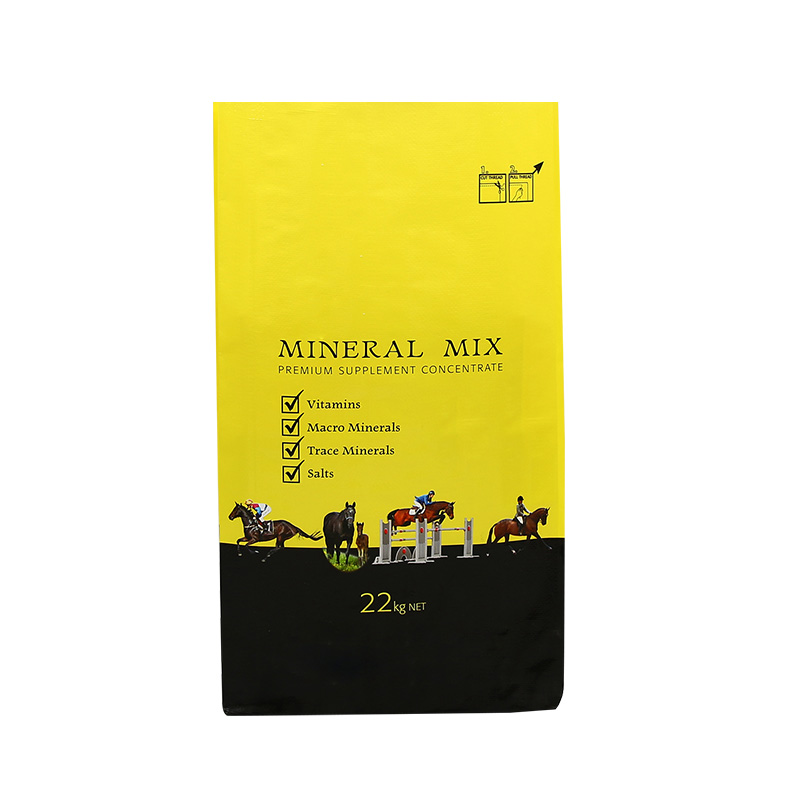Valve bags have long been a preferred choice for packaging bulk materials such as cement, chemicals, and food products due to their efficient filling and handling properties. As industries continue to demand better performance, improved sealing techniques for valve bags have become a focus for manufacturers aiming to enhance storage safety, reduce spillage, and maintain product integrity during transportation. This article explores recent developments in sealing methods, along with the integration of other packaging solutions such as compostable resealable pouches, BOPP cement bags, and BOPP non woven bags.

Traditionally, valve bags relied on simple heat sealing or adhesive methods to close the filling valve after packaging. While effective for many applications, these methods occasionally presented challenges such as weak seals under high stress, susceptibility to moisture, and limited resistance to punctures or abrasions. New sealing technologies are now being applied to address these issues, incorporating techniques such as ultrasonic welding, advanced adhesive layers, and double-fold valve closures. These methods provide consistent sealing quality, helping to prevent leaks and contamination while supporting the weight and handling demands of bulk materials.
One area of innovation involves the integration of barrier films into valve bags. By combining traditional kraft paper with layers of BOPP (biaxially oriented polypropylene), manufacturers can create BOPP cement bags that offer enhanced moisture resistance and strength. These bags are particularly useful in construction and cement distribution, where exposure to humidity or rough handling can compromise product quality. The addition of BOPP layers not only strengthens the bag but also facilitates cleaner and more uniform sealing along the valve, reducing the risk of leakage during transport and storage.
Beyond industrial materials, valve bag sealing improvements are also influencing the design of consumer-oriented packaging. Compostable resealable pouches are gaining attention for applications such as food, snacks, and specialty powders. These pouches combine environmentally friendly materials with resealable closures, allowing users to maintain freshness while reducing single-use waste. By adopting sealing techniques similar to those developed for industrial valve bags, compostable resealable pouches can achieve secure closures that are reliable, easy to operate, and compatible with automated filling systems. This demonstrates how innovations in one segment of the packaging industry can inform and benefit other sectors.
BOPP non woven bags represent another example of how sealing techniques are evolving across different packaging types. These bags are constructed from polypropylene fibers that are bonded together to form a durable, lightweight, and reusable container. The versatility of BOPP non woven bags makes them suitable for applications ranging from shopping bags to bulk product packaging. Applying advanced sealing technologies to these bags, such as reinforced heat-sealed edges or adhesive-enhanced seams, improves their ability to carry heavier loads without compromising integrity. This allows manufacturers to offer bags that are both functional and resistant to environmental stressors such as moisture, abrasion, and UV exposure.
The improvements in sealing techniques are also being complemented by enhanced quality control processes. Modern inspection systems, including automated seal integrity testers and inline vision systems, are helping manufacturers verify that every valve bag, BOPP cement bag, or compostable resealable pouch meets predefined sealing standards. By reducing the risk of defective seals, these technologies lessen product waste, improve customer satisfaction, and enhance the overall efficiency of packaging operations.
Sustainability is another key consideration driving these advancements. Manufacturers are increasingly exploring how sealing improvements can reduce material usage without compromising performance. For example, more precise valve designs and better adhesive formulations can reduce the thickness of barrier layers required, lowering the environmental footprint of BOPP cement bags. Similarly, compostable resealable pouches benefit from sealing methods that preserve strength and functionality while ensuring full biodegradability. These trends reflect a growing emphasis on creating packaging solutions that are both effective and environmentally responsible.
In conclusion, improved sealing techniques for valve bags are transforming the packaging landscape for industrial and consumer products alike. By integrating innovative methods into valve closures, BOPP cement bags, BOPP non woven bags, and compostable resealable pouches, manufacturers can enhance product protection, optimize handling, and support sustainability initiatives. As research and technology continue to evolve, these developments are likely to influence a wide range of packaging solutions, offering practical benefits for industries that depend on secure, reliable, and environmentally conscious materials.


 English
English Español
Español عربى
عربى
